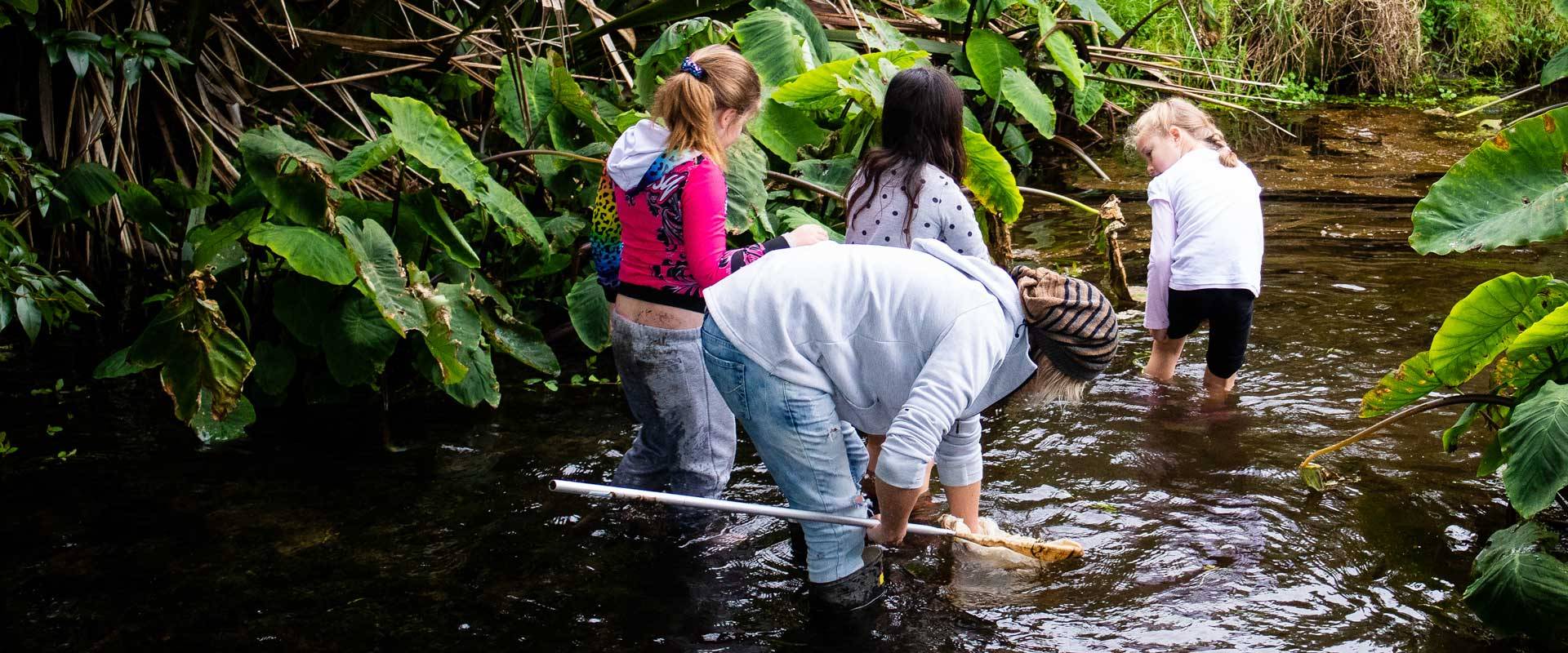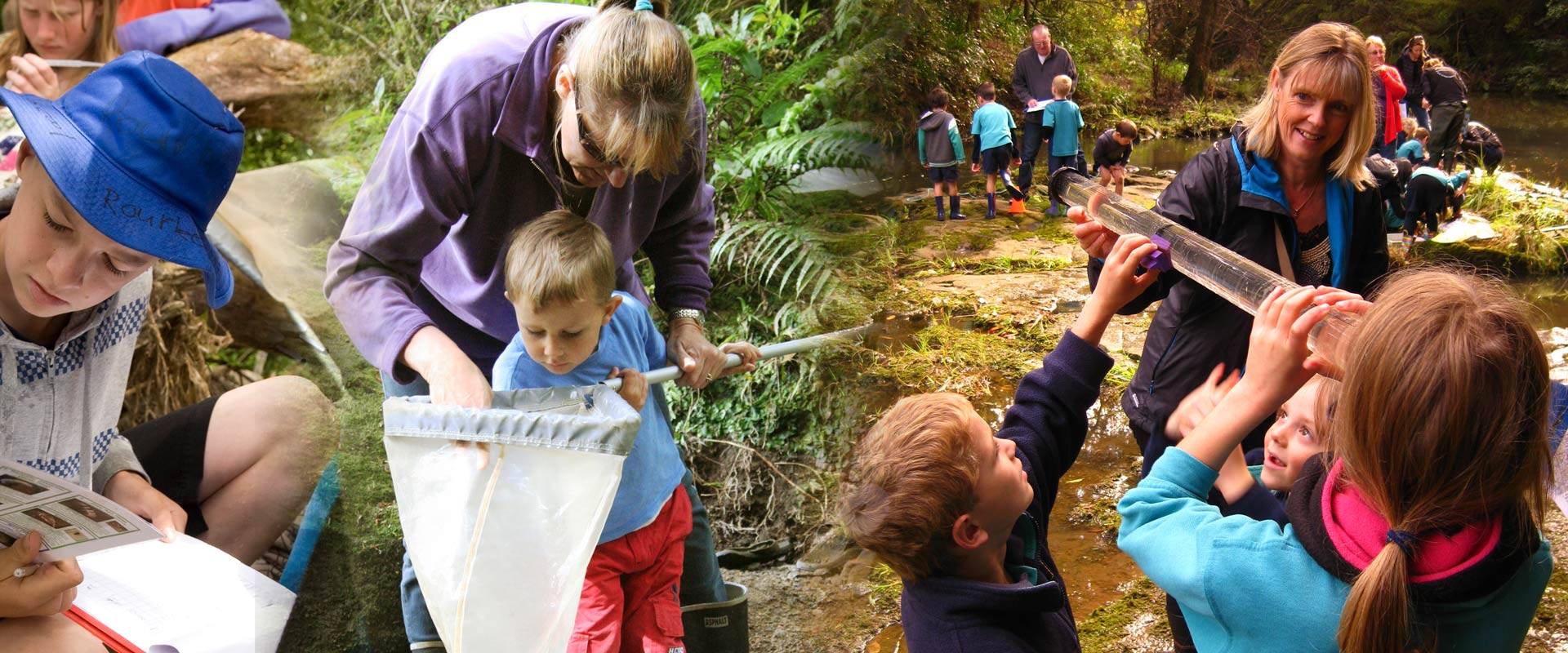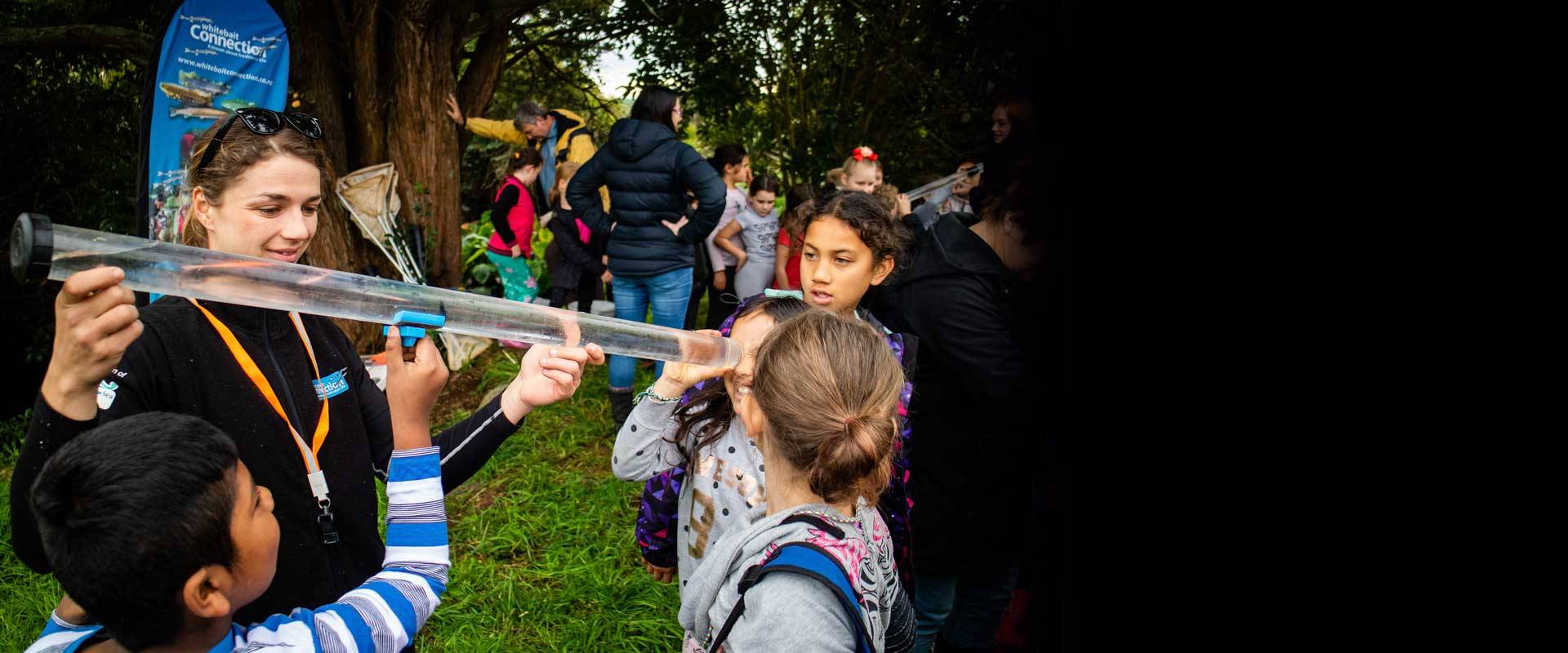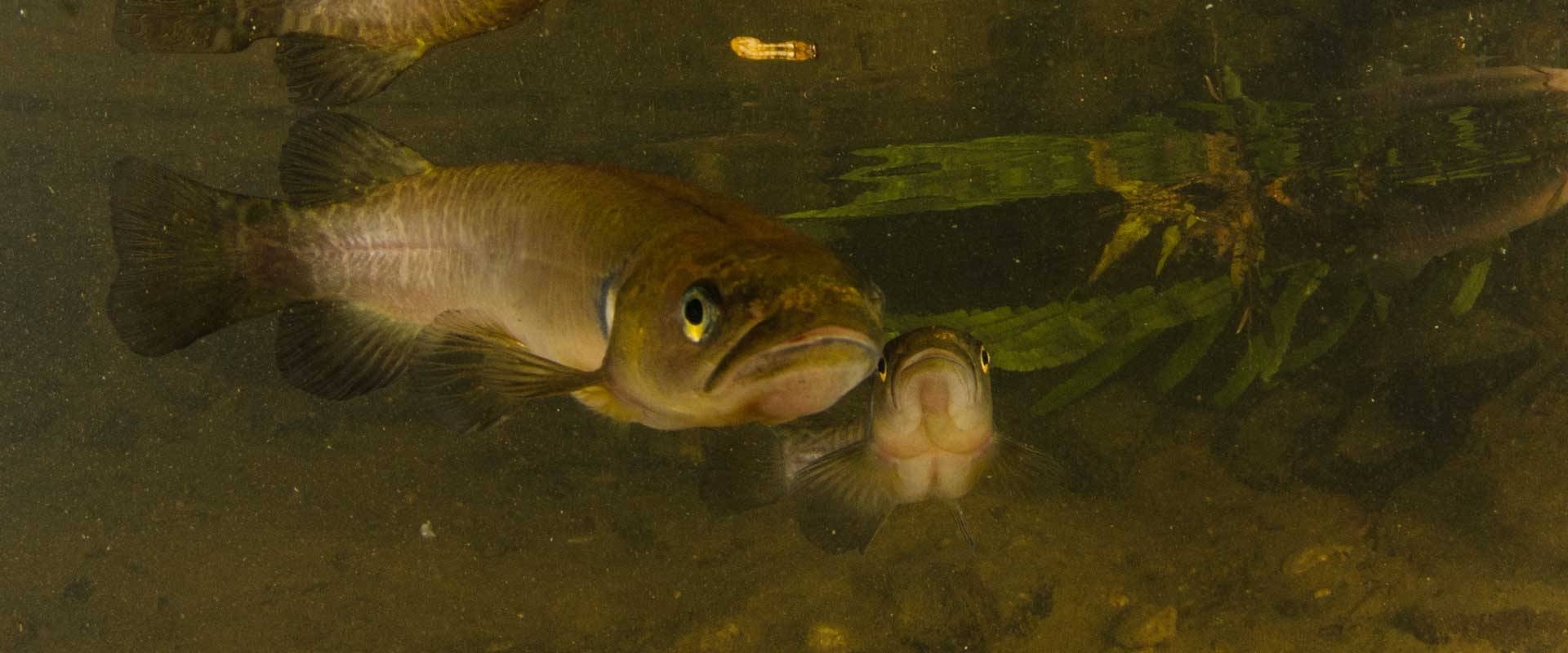In 2022 Whitebait Connection Programme Coordinator Rosie worked with Opua School for programme delivery. Their programme included trips to the Waiomio and School Road streams for freshwater investigations.
The Waiomio Stream flows into the Kawakawa River which then flows out into Waikare Inlet, at the bottom of the catchment. The Waiomio Stream starts in Ruapekapeka, at the top of the catchment. The catchment land use is mainly farmland and urban housing. Here are the results the students got from testing at the Waiomio Stream:
- Habitat Assessment - the students noticed that there was no shade over most of the waterway, and there was quite a lot of erosion of the stream bank from the neighbouring farmland. They found lots of litter nearby and spotted stormwater pipes that were emptying into the stream.
- Electrical Conductivity - 170-180 µS/cm
- Temperature - 14 degrees celsius
- pH - 7
- Clarity - 50cm
- Macroinvertebrates - woody cased caddisflies, dragonfly nymph, freshwater shrimp, water boatmen, mites, snails, worms, pond skaters
- The only fish caught in the gee minnow traps set overnight were the pest fish gambusia
Macroinvertebrate sampling at the Waiomio Stream
The second water testing site (School Road Stream) is in the Waitangi Catchment. This small stream starts in the Opua Forest and is located in the middle of the catchment. The catchment land use is mainly farmland and native bush. Here are the results from the students testing at this site:
- Clarity - 57cm
- pH - 7
- Temperature - 11 degrees celsius
- Electrical conductivity - 170 µS/cm
- Macroinvertebrates - woody cased caddisflies, flat mayfly nymphs, snails, shrimp, mites and mosquito larvae
- Fish caught overnight in the gee minnow traps included banded kokopu, inanga and redfin bullies
Testing clarity at the School Road Stream








